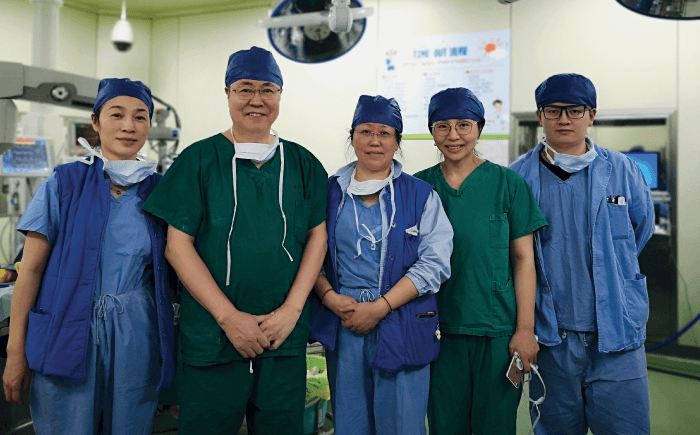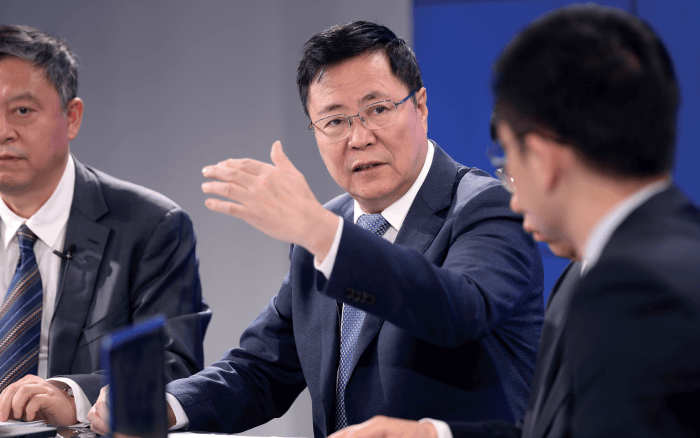
What did you want to be growing up?
When I was a child, I wanted to be a scientist. The first book I ever read was “One Hundred Thousand Whys” [a popular Chinese science book]. I was a really curious kid and this book was my first window into understanding the basics of this world. As I grew older, I came to appreciate the beauty of art and was fascinated by the paintings of Salvador Dalí. It was amazing to me that you could present a world almost beyond imagination through the tip of a brush – and so I started dreaming about becoming an artist.
Why did you decide to pursue a career in ophthalmology?
I almost didn’t. When it came to my college entrance exams, I actually applied to study art as my first choice and engineering as my second choice, but was unsuccessful. However, in another way, it actually worked out just fine as I got into medical school – after all, medicine is the perfect blend of science and art.
What route did you take to become Director of the Beijing Tongren Eye Center?
In 2002, Beijing Tongren Hospital issued a job announcement saying they were looking for a Director of their ophthalmology department. Becoming the Director of the ophthalmology department, the largest eye center in north China that has a history of over 120 years, does have its unique appeal. Back then, I was working in the largest eye center in south China, the Zhongshan Ophthalmic Center. With my life, my work, and my family and friends all in Guangzhou, the decision to leave was a hard one to make. However, after thorough consideration, I knew it would be a great platform for me to realize my potential and to see if I would be able to serve not only as a doctor but also as a leader. I decided to apply for the job.
Though the competition was fierce, I managed to get the position. After starting working in Tongren as Director of the ophthalmology department, I led the founding of Beijing Tongren Eye Center. With a decade of effort, under my watch, the center transformed from a clinical center to a center of global influence that pioneers both clinical practice and scientific research. The ophthalmology department of Tongren Hospital is one of its best, with over 200 ophthalmologists. I was then entrusted with an even bigger responsibility – vice-president of the hospital, mainly in charge of scientific research. And in another shift, my social influence, leadership, and management skills were put to use as president of the hospital from 2016 to 2017.
What do you consider to be your greatest success?
With great honor, I have been serving as the head of the National Committee for the Prevention of Blindness. I was one of the co-leaders of a project dedicated to eliminating blinding trachoma in China by 2016. It was a great success, and resulted in the WHO verifying that China had eliminated the condition by 2019. It is incredibly exciting that we managed to do it in a country with a population of 1.4 billion.
How has the glaucoma field changed over the course of your career?
Firstly, there has been a 50 percent decrease in the blinding rate of angle-closure glaucoma. Secondly, the success rate of glaucoma surgery has increased to 90 percent with the introduction of MIGS in congenital glaucoma children. Thirdly, a consensus was issued on artificial intelligence-based fundus screening for glaucoma; we are now carrying out screening in some of the country’s most remote areas.
Your last few papers analyzed the rural adult population in China. How has access to eyecare improved for the rural and general population?
In rural areas, access to eyecare has improved since the establishment of new rural cooperative medical insurance system, meaning basic eye care services are now covered. Tele-ophthalmology centers have also played an important role in the improvement of eye care accessibility.
Which piece of research are you most proud of and why?
I would probably say the proposition of the Trans-lamina cribrosa pressure gradient theory, which explained the optic nerve injury in normal tension glaucoma patients and identified low intracranial pressure as a risk factor.

What developments would you like to see in your lifetime?
In an ideal world, I’d like to see the clinical application of gene therapy in glaucoma, including gene modification and targeted intervention.
Outside of ophthalmology, what makes you happy?
Cycling. I have cycled around the five famous lakes in China. I hope that someday soon I will be able to participate as a racer in the Tour de France.
Which person outside of the scientific community has been your biggest inspiration?
Leonardo da Vinci. I really admire his free mind. I recently translated Martin Clayton’s book, “Leonardo da Vinci: Anatomist,” into Chinese.
Can you describe your perfect non-working day?
I’d wake up after a good night’s sleep to a shining day in a beautiful place. I’d go cycling with my friends or do some other outdoor activities. At night, I’d read a book or watch one of my favorite movies.
What’s changed for you since the start of the pandemic – both professionally and personally?
A few months without clinical work meant I was able to complete a few important projects I had been meaning to do for a while. I now spend more time taking care of my health and have a new hobby: cycling. I lost about 15 pounds and now my biochemical indicators are all back to normal. I don’t have a fatty liver anymore!
Finally, what advice would you give to your younger self?
When you fall in love with a girl, don’t hesitate to tell her – a second chance may never come.

